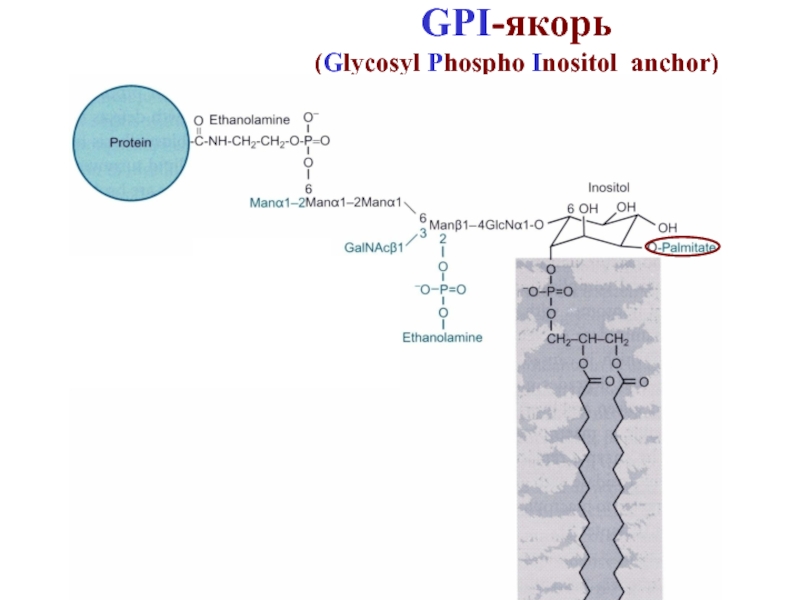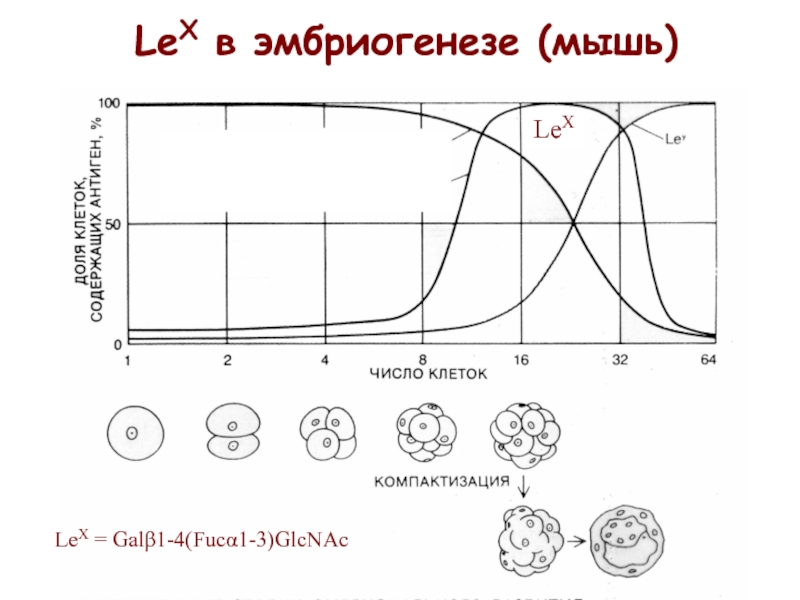Разделы презентаций
- Разное
- Английский язык
- Астрономия
- Алгебра
- Биология
- География
- Геометрия
- Детские презентации
- Информатика
- История
- Литература
- Математика
- Медицина
- Менеджмент
- Музыка
- МХК
- Немецкий язык
- ОБЖ
- Обществознание
- Окружающий мир
- Педагогика
- Русский язык
- Технология
- Физика
- Философия
- Химия
- Шаблоны, картинки для презентаций
- Экология
- Экономика
- Юриспруденция
Лекция 4 протеогликаны, полисахариды, липополисахариды; гликолипиды,
Содержание
- 1. Лекция 4 протеогликаны, полисахариды, липополисахариды; гликолипиды,
- 2. GPI-якорь (Glycosyl Phospho Inositol anchor)
- 3. Слайд 3
- 4. Слайд 4
- 5. протеогликаны
- 6. Слайд 6
- 7. The average predicted structure of an HA
- 8. Слайд 8
- 9. строение липополисахаридаолигосахарид кора липид
- 10. LPS, жирные кислотыполи-сахарид
- 11. Слайд 11
- 12. Слайд 12
- 13. ОСНОВНЫЕ “СЕРИИ” (КОРЫ) ГЛИКОСФИНГОЛИПИДОВ · LACTO
- 14. номенклатуры“ose” номенклатураSymbol
- 15. «продвинутая»OSE номенклатура
- 16. Номенклатура Свеннерхольма (для ганглиозидов)
- 17. Слайд 17
- 18. Сходные терминации
- 19. модели четырёх коровых фрагментов GSLGg (ганглио-) Gb (глобо-)Lc (лакто-)nLc (неолакто-)
- 20. A405Холестерин как триггер взаимодействия Gb3 с Gb3-связывающими белками
- 21. GSL на поверхности мембраны организованы в кластеры
- 22. Слайд 22
- 23. Гликолипиды формируют устойчивые комплексы
- 24. биосинтез ГСЛ, на примере ганглиозидовCerLacCerGalGlcGlcNAcNeu5Ac
- 25. modified
- 26. neoglycolipidGlyc-PAA pseudo -mucinДальше: гликоландшафт HyalU
- 27. Слайд 27
- 28. LeX в эмбриогенезе (мышь)LeX = Galb1-4(Fuca1-3)GlcNAcLeX
- 29. гипотеза об узнавании LeX специфическими белками второй клетки
- 30. углевод-углеводное взаимодействие: GM3/Gg3 и др.Слабые, но многочисленные…
- 31. кластеры ГСЛ взаимодействуют и передают сигнал
- 32. углевод-углеводное взаимодействие: цис- (а) и транс- (b)(а)(b)
- 33. углевод-углеводное взаимодействиеrepulsivestrong
- 34. углевод-углеводное взаимодействие протеогликанов в губках
- 35. углевод-углеводные и углевод-белковые взаимодействияcлабые (на моновалентном уровне) мультивалентныечасто динамические, первичные в ступенчатом процессе
- 36. Слайд 36
- 37. коллектины как пример мультивалентного белка
- 38. Слайд 38
- 39. углевод-углеводное взаимодействие с участием полисахаридов )
- 40. углевод-углеводное взаимодействие: простые методы исследования
- 41. презентация гликолипидов (на DC, MФ)клеткам иммунной системысульфатид белок CD1
- 42. 1. GSL-to-GSL interaction, either homotypic or heterotypic.
- 43. Скачать презентанцию
Слайды и текст этой презентации
Слайд 6
Комплекс антитромбина с
пентасахаридным
фрагментом гепарина
протеогликан
GlcNAc-6Su;
GlcA; GlcN-Su-3,6Su2; IduA-2Su; GlcN-S-6SuСлайд 7 The average predicted structure of an HA octasaccharide (top) from
molecular dynamics simulations of HA in water. The overall shape
of a longer fragment of HA derived from the local average structure. This fragment is longer than the persistence length and, while it represents the average structure, such a perfect structure would be predicted to occur only fleetingly in solution.Примеры полисахаридов млекопитающих. Пространственная структура
Hyaluronic acid
Слайд 9 строение липополисахарида
олигосахарид кора липид A
- моносахарид
- фосфатная
группа
- жирная
кислота
внешний внутренний
кор
кор Слайд 13ОСНОВНЫЕ “СЕРИИ” (КОРЫ) ГЛИКОСФИНГОЛИПИДОВ
·
LACTO
(Lc)
Gal
b
1
-
3GlcNAc
b
1
-
3
Gal
b
1
-
4Glc
-
Cer
·
N
eoLACTO
(nLc)
Gal
b
1
-
4GlcNAc
b
1
-
3
Gal
b
1
-
4Glc
-
Cer
·
GLOBO
(Gb)
Gal
a
1
-
4
Gal
b
1
-
4Glc
-
Cer
·
isoGLOBO
(iGb)
Gal
a
1
-
3
Gal
b
1
-
4Glc
-
Cer
·
MUCO
(Mc)
Gal
b
1
-
3
Gal
b
1
-
4Glc
-
Cer
GANGLIO
(Gg)
GalNAcb
1-4Galb1-4Glc-Cer
Слайд 35углевод-углеводные и
углевод-белковые взаимодействия
cлабые (на моновалентном уровне)
мультивалентные
часто динамические, первичные
в ступенчатом процессе
Слайд 421. GSL-to-GSL interaction, either homotypic or heterotypic. A typical example
of homotypic interaction is cell adhesion based on Lex-to-Lex interaction, observed
in autoaggregation of embryonic stem cells D3M, or embryonal carcinoma cells F9, in the presence of Ca2+. Occurrence of such cell adhesion was further confirmed using D3M or F9 cells whose E-cadherin gene was knocked out. These cells still displayed strong Lex-dependent autoaggregation and adhesion to Lex GSL-coated plates. which were eliminated by siRNA of fucosyltransferase-9, involved in Lex synthesis. Lex-to-Lex interaction has been extensively studied and confirmed by various biophysical procedures, including atomic force microscopy, aggregation of gold glyconanoparticles with Lex, and adhesion energy change based on contact angle (Δ;θc) of two Lex vesicles. Heterotypic carbohydrate-to-carbohydrate interactions were found between GM3 and Gg3, mediating adhesion of melanoma cells to lymphoma cells; and between GM3 and LacCer, mediating binding of melanoma cells to microvascular endothelial cells, i.e., cancer metastatic process. Gold lactosyl nanoparticles were found to inhibit melanoma cell metastasis in vivo. Interaction of GalCer with sulfatide (3-O-sulfated GalCer), previously observed on various biophysical bases, was found to mediate adhesion of interfacing membranes of oligodendrocytes. Adhesion based on both homotypic and heterotypic carbohydrate interaction induces activation of signal transducers at cytoplasmic site, to alter cellular phenotype. Hakomori Page 13 FEBS Lett. Author manuscript; available in PMC 2011 May 3. NIH-PA Author Manuscript NIH-PA Author Manuscript NIH-PA Author Manuscript 2. Structure and function of carbohydrate-binding proteins expressed at cell surface membrane involved in cell-cell adhesion, or interaction of cell with its microenvironment, are well established by many studies. Three major classes of carbohydrate-binding proteins are: (i) Selectins (E-, P-, and L- types) having different structures and functions, and recognizing different glycosyl epitopes containing LacNAc backbone with fucosyl, sialosyl, or sulfate residue. Selectins play a major role in inflammatory processes and cancer progression, particularly metastasis (for review see. (ii) Sialic acid-binding lectins, abbreviated as “siglecs”, expressed at lymphocytes and myelocytes. Their function is to maintain the internal microenvironment (for review see. (iii) Galectins, comprising a huge number of variants, that recognize galactose or galactosamine. Their functions are varied, and many are still unclear (for review seeGSLs in glycosynapse, involved in cell-cell adhesion.
When glycosynapse of one cell (“a”) contacts glycosynapse of another cell (“b”), cell adhesion
occurs by two mechanisms: (1) GSL-to-GSL interaction, which induces activation of signal
transducer (STD), leading to change of cellular phenotype. In this process, proteolipid protein
(PLP) [18,35] may stabilize conformation of GSL. (2) GSL binds to GSL-binding protein,
which induces activation of STD, leading to change of cellular phenotype. Each process is
further explained below.





























































